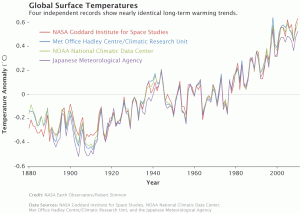In modern education, it would be difficult not to see the benefit of the LfU framework which emphasizes the need for teachers to create demand for knowledge, elicit curiosity, provide direct experiences, elicit communication, and provide opportunities to apply and reflect on their knowledge (Edelson, 2001, p. 360). Similarly, Radinsky, Oliva and Alamar (2010) support that idea that “scientists generate new knowledge through a collective, contested, negotiated process, based on communication and mutual accommodation of ideas, rather than simply through the individual exercise of abstract logical reasoning” (p. 619).
Now I could proceed with this post by suggesting hypothetical applications of the LfU framework, but I thought it would be more interesting to share some related experiences from the school I work in. Fortunately, aspects of the LfU framework are already built into our curriculum which is driven by similar core values. For instance, our Kindergarten teacher incorporated a series of critical thinking activities to help students understand food science, food waste, and business models:
Motivate – (Create Demand) JK/SK students were given the task to design their own pizzas. (Elicit Curiosity) Servery staff worked with the students to understand what goes into a pizza and how they are made.
Construct – (Direct Experience) Students created their own pizzas based on the knowledge gained from the Servery staff. (Elicit Communication) Students received feedback on their pizzas from teachers and other students for their size, shape, and choices of toppings.
Refine – (Apply) Students worked in groups to create their own pizzerias with menus / table arrangements, and executed a lunch service for staff and students. (Reflect) Food waste was weighed and students discussed changes in the pizzas/menus/service to reduce waste in the future.
In Senior School, application of an LfU-type framework has naturally been more complex. In some cases, they have been augmented by partnerships with other educational organizations.
Motivate – (Create Demand) As part of an interdisciplinary course, groups of students were challenged by the U of T, Munk School of Global Affairs to develop a technological solution for the world birth registry crisis. (Elicit Curiosity) Each group studied the issue in different countries and decided on one country to develop a solution.
Construct – (Direct Experience) One particular group explored different technology-based solutions including developing a Smartphone app. (Elicit Communication) The group consulted with various experts, government officials, and technology companies within the country.
Refined – (Reflect) Due to the country’s emerging infrastructure, the group developed a solution that incorporated a text-messaging system that was more cost effective and easier to implement. (Apply) The group presented the solution first to a panel of local experts and then communicated it to leaders in the target country. That country is now implementing a system based on the group’s solution.
I believe the power of this LfU framework is fully realized when motivation is situated in a challenge that is real to the student(s) and ideally has no solution. This can be frightening for teachers as they usually present concepts knowing the answers already. I would love to hear your thoughts on these experiences and whether they exemplify the LfU framework.
Edelson, D.C. (2001). Learning-for-use: A framework for the design of technology-supported inquiry activities. Journal of Research in Science Teaching,38(3), 355-385.
Radinsky, J., Oliva, S., & Alamar, K. (2009). Camila, the earth, and the sun: Constructing an idea as shared intellectual property. Journal of Research in Science Teaching, 47(6), 619-642
